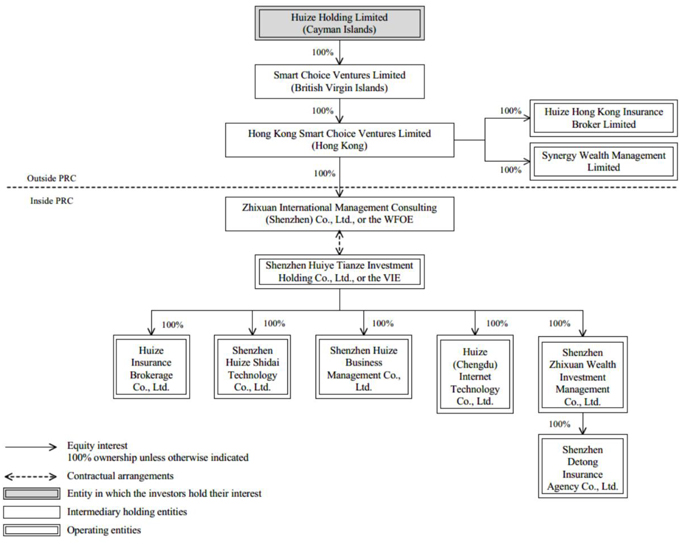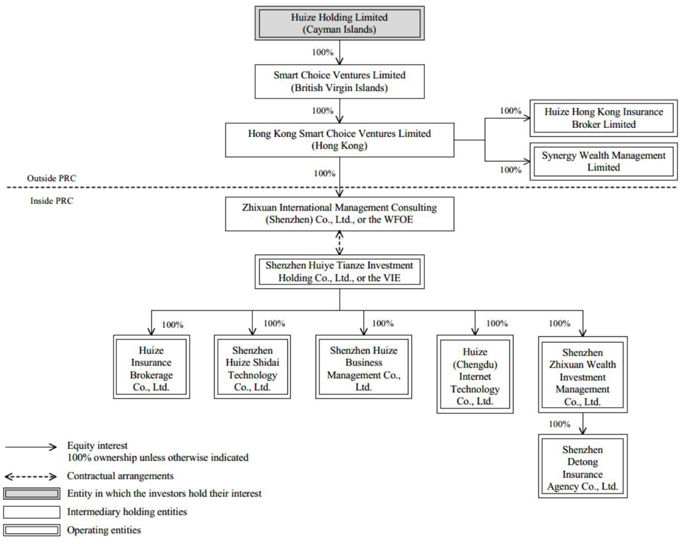
Note:
| (1) | Shareholders of Shenzhen Huiye Tianze Investment Holding Co., Ltd., or Huiye Tianze, are: (1) Shenzhen Huidecheng Investment Development Limited Partnership and Shenzhen Huideli Consulting Management Limited Partnership, both as our PRC ESOP holding entities, holding an aggregate of 49.43% shares in Huiye Tianze; (2) PRC holding entities of the shareholders of our Cayman Islands holding company, holding an aggregate of 50.57% shares in Huiye Tianze. |
We face various legal and operational risks and uncertainties associated with being based in or having our operations primarily in China and the complex and evolving PRC laws and regulations. For example, we face risks associated with regulatory approvals on offerings conducted overseas by and foreign investment in China-based issuers, the use of the VIE, anti-monopoly regulatory actions, oversight on cybersecurity and data privacy, which may impact our ability to conduct certain businesses, accept foreign investments, or list on or remain listed on a United States or other foreign exchange. These risks could result in a material adverse change in our operations and the value of our ADSs, significantly limit or completely hinder our ability to offer or continue to offer securities to investors, or cause the value of such securities to significantly decline or become worthless. For a detailed description of risks related to doing business in China, see “Item 3. Key Information—D. Risk Factors—Risks Relating to Doing Business in China.”
PRC government’s significant authority in regulating our operations and its oversight and control over offerings conducted overseas by, and foreign investment in, China-based issuers could significantly limit or completely hinder our ability to offer or continue to offer securities to investors. Implementation of industry-wide regulations in this nature may cause the value of such securities to significantly decline or become worthless. For more details, see “Item 3. Key Information—D. Risk Factors—Risks Relating to Doing Business in China—The PRC government’s significant oversight and discretion over our business operation could result in a material adverse change in our operations and the value of our ADSs.”
5
